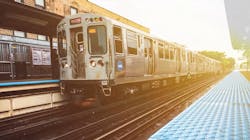What’s Next for Public Transportation? Three Steps to Get Back on Track
Public transportation took a “gut punch” like many other industries during the peak of the pandemic. Little was known early on about the coronavirus so uniformed leaders told passengers to “stay off the bus” and only essential workers should use it. Disregarding the subtle bad undertones of that message, the end result was that many suburban commuters stayed home and are still not riding the trains and buses into the cities. Inner city bus, light rail and metro subway transit ridership is still much lower than pre-COVID-19 levels with passenger revenues plunging, while cleaning and other costs are increasing. Washington has responded with two relief packages, the most recent offering $14 billion to public transit agencies to help keep them afloat and reduce the need for draconian service cuts and layoffs that many large agencies were contemplating.
Now what? How does public transit rebound without an unrealistic long-term reliance on dramatically increased federal operating subsidies?
Restructure and revitalize
Some transit agencies are refocusing and expanding their core mission to not only include improved mobility (other than driving alone) but also providing traffic congestion relief, a cleaner environment and social equity. As a result, their main service offerings may be adjusted.
Joshua Schank, chief innovation officer of Los Angeles County Metropolitan Transportation Authority (Metro), stated recently on the Transit Unplugged podcast, “Now is the time to do the new stuff because now people are open to change.” He continued that now, “the goal for public transit agencies is not getting more people to ride transit.”
Routes that were eliminated during the peak of the COVID-19 pandemic shutdown may not all be brought back. Some agencies (like Los Angeles Metro) are introducing microtransit to help fill in the gaps of fixed route bus service. Microtransit operates like a group taxi or Uber Pool but is operated either by or under contract to the transit agency. Other public transportation services that are maintaining lower than pre-pandemic commuter train and bus routes might consider adding mid-day, night and weekend service to help cultivate tourist, nightlife and sporting event ridership into the cities. Finally, as Transport for London (TfL) Director Ben Plowden told me on the Comfort’s Corner podcast, his agency and others may now start to look at beefing up suburban area transit services to meet the demands of riders who are working from home to take them to lunch and local services in their communities.
High tech/low touch
The American Public Transportation Association (APTA) recently surveyed its members representing most major transit systems in the U.S. about what mitigation efforts they are undertaking as a response to COVID-19. The response was overwhelming. Most transit agencies are ramping up their technology and moving to low touch solutions on their services.
These solutions include moving fare payment from cash to contactless payments of credit cards and smart phone app-based faring; adding on-demand applications; introducing common payment platforms and Mobility as a Service (MaaS) applications so that all the public mobility options in a city can be accessed and paid for on one smart phone app; and including vehicle occupancy in their GTFS real time data feeds to the public so they can see if a bus is already full before it gets to the bus stop.
Additionally, they need to add better asset, staffing management and back office route planning technology tools to help future proof their agency against coming challenges. This way drivers can check-in remotely (low touch) and agencies can track the location of vehicles real time, as well as better analyze potential route changes to match demand.
Green and clean
Unfortunately, early pandemic stigmatizing of public transportation as a potential source of contagion caused many people to view transit vehicles as “unclean.” While the studies have not borne this view out, transit has always been a better way to travel when it comes to a cleaner environment. States like California have implemented zero-emission bus (ZEB) mandates and other cities and states are also following suit. Getting this message out to riders that public transit is green and clean for the environment is a priority for many major transit systems and will assist in purging the “transit is unclean” bad messaging that resonated early in the pandemic, before many studies indicated otherwise.
In order to help passengers feel safe on public transit, agencies are continuing their ramped up cleaning and sanitation programs. In addition to visible multiple cleanings of high touch areas on buses and trains, agencies are also implementing physical distancing measures or dividers between seats, as Metrolinx in Toronto has done for its commuter trains. Agencies also have implemented biometric measures such as temperature testing of passengers and drivers before they board. Better vehicle ventilation, misting and UV light treatments are also all the rage.
2021
2021 can be a year of rebounding ridership and refocused priorities for transit services across North America. As agencies put in place high tech/low touch solutions, reformulate their brand to highlight green and clean solutions and only sell services that people are buying by adjusting routes to meet new levels of demand and adding new services such as microtransit and MaaS through partnerships with private sector providers, they can be reborn from this once in a generation pandemic better suited to meet the mobility needs of the coming decade.
------------------
Paul Comfort is vice president of Trapeze Group, best selling author and host of the Transit Unplugged podcast.
